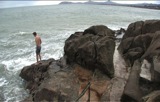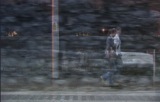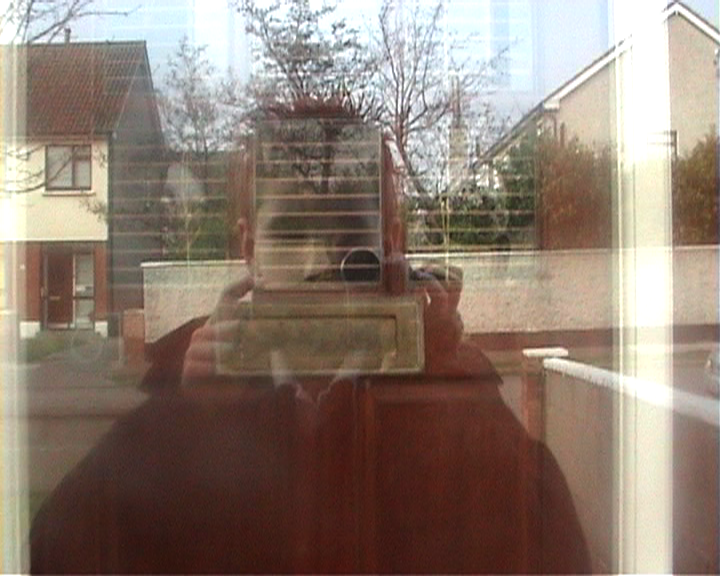


You'll Come And Find The Place (03’30”)
with Jean Philippe Renoult
Blowin’ down the motorway (01’31”)
With Joe Naughton
Gangland (extact 01’52”)
PC can’t play these clips?




Vico Road (extract 03’14”)
With Jobst Graeve




23 April 2009: Moving Dublin (the Book and the Film) launched by Minister Eamon Ryan at the Broadcast Gallery Dublin.


Luas Carol (extract ‘Museum’ 01’20”)
With with J P Renoult & Dinah Bird


The Observer Effect (19’50”)
With students of Collinstown Park CC



Below : One of the artists workshops with St Mary’s 6th class students, March 2007
In December 2006 we visited the sixth class of Saint Mary’s primary school on Greenhill’s road in Tallaght Village. There has been a national school more or less on this same spot for 150 years. Though I didn’t succeed in unearthing the exact date of construction of the first national school, the site is clearly marked on the ordnance survey map of Tallaght Parish from 1864. Malachi Horan also mentions the school in his memoirs; “the widow Doolin rolled up her sleeves and made things proper. She hired Byrne to teach her weans; paid him and gave him bed and board, and then let the neighbours’ children have their chance too. I spent two years at this school till the first national school was opened on the Greenhill’s road at Tallaght. I went there then.”In our first meeting with the class we discussed the whole question of movement in the city and looked at recent statistics; by the year 2010, 51,3 % of the world’s population will live in urban districts. Most of these people will reside, by choice or necessity, in those outlying areas known as suburbs. Transport will be a major question in their lives. The subject of daily journeys, for all its banality, is of vital importance. We calculated with the children how many times each one of them would journey to and fro between home and St. Mary’s. A child attending school for 180 days in the year will follow the same path 360 times in the year. A class of 24 children attending primary school for 6 years will make approximately 51 840 journeys. We imagined a deep groove worn along the path of each child’s route. To each child we gave a handycam and invited them to film their walk, their drive or their cycle to and from school. We put no restriction on what or how they should film. Every child had their own way of using the camera; there were silent walkers, stand-up comics, environmental critics... In the true indomitable spirit of twelve year olds, the children of St. Mary’s school took liberal license with the given directives, filming earrings, dogs, lollipop ladies, traffic lights, furry toys and cars, cars, cars... all of which they amply embellished with remarks, comments and witticisms. The result is a dual screen video installation, a polyphonic vision of suburban life, edited entirely from the children’s’ own filming. An ordinary suburb, a place like any other, is transformed into a place like no other through the familiar and affectionate regard of 24 children.
Dual screen video installation
Length : 33’ 24”
Year : 2007
Michelle Meaney
Josephine Corrigan
Eimear Connolly
Shauna Jones
Lauren Sewell
Lauren Byrne
Sarah Menton
Kirstyn O'Connor
Isabella Grace
Lauren Patchell
Dorcas Olayiwiola
Dara Curran
Dorcas Olayiwiola
Dara Curran
Aidan Kelly
David Kavanagh
Darragh Hanlon
Graham Whelan
Sam Doyle
Lee Hannigan
Shane Leen
Gary Malone
Joseph Rooney
P.J.Deegan
Misha Mednikov
Darragh O'Reilly
Tristan Shiels
Rasaki Bologun
Scott Fowler
Extract 2. Clip 02’47”. The 30 Acres
Extract 1. Clip 01’18”. Auto Obsession
PREMISES
PRACTICES
PLACES
You'll come and find the place
PRODUCTION
Moving Dublin explores the everyday world of movement in Dublin and its vast sprawling suburbs spreading out west from the coastal city. We look at how far the contemporary world of the Dublin commuter has strayed from the civic realm it constituted when Joyce wrote the Wandering Rocks chapter of Ulysses.
Moving Dublin is to be published in the form of a book and DVD in March 2009 by Gandon Editions
Moving Dublin has been commissioned by South Dublin County Council through In Context 3 and funded under the Department of Environment, Heritage and Local Government’s Per Cent for Art Scheme.













